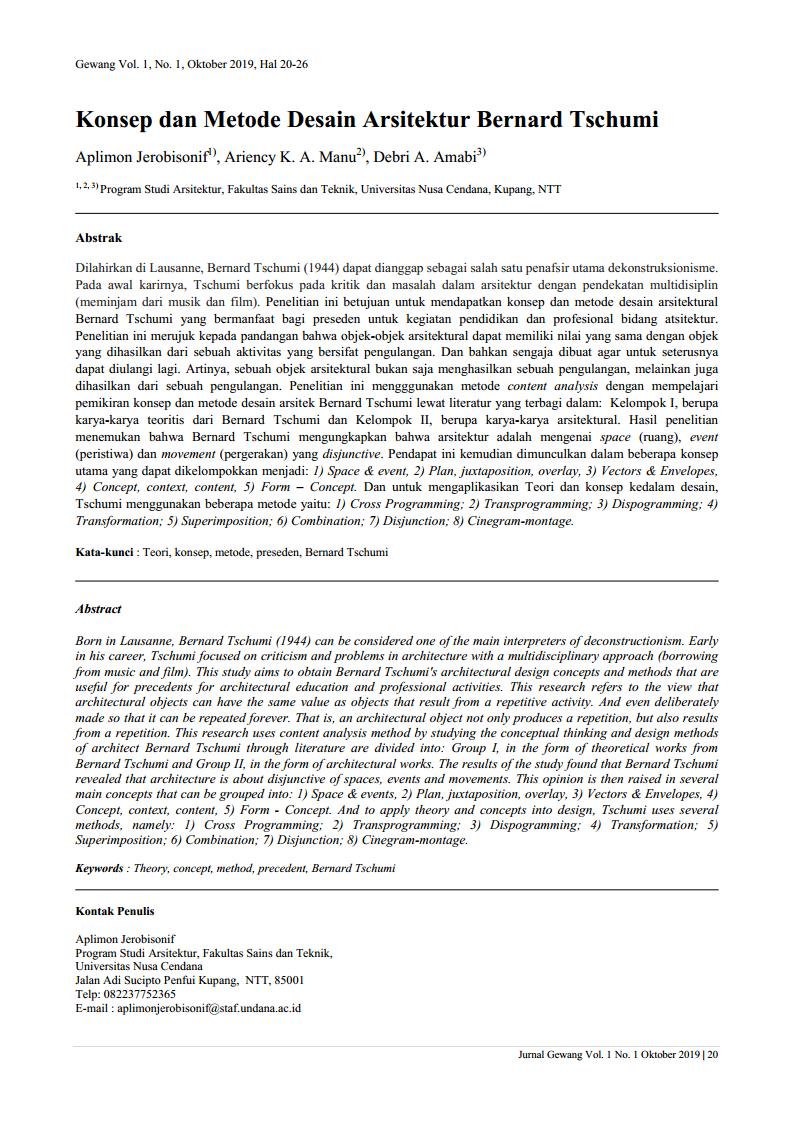Konsep dan Metode Desain Arsitektur Bernard Tschumi
Main Article Content
Abstract
Born in Lausanne, Bernard Tschumi (1944) can be considered one of the main interpreters of deconstructionism. Early in his career, Tschumi focused on criticism and problems in architecture with a multidisciplinary approach (borrowing from music and film). This study aims to obtain Bernard Tschumi's architectural design concepts and methods that are useful for precedents for architectural education and professional activities. This research refers to the view that architectural objects can have the same value as objects that result from a repetitive activity. And even deliberately made so that it can be repeated forever. That is, an architectural object not only produces a repetition, but also results from a repetition. This research uses content analysis method by studying the conceptual thinking and design methods of architect Bernard Tschumi through literature are divided into: Group I, in the form of theoretical works from Bernard Tschumi and Group II, in the form of architectural works. The results of the study found that Bernard Tschumi revealed that architecture is about disjunctive of spaces, events and movements. This opinion is then raised in several main concepts that can be grouped into: 1) Space & events, 2) Plan, juxtaposition, overlay, 3) Vectors & Envelopes, 4) Concept, context, content, 5) Form - Concept. And to apply theory and concepts into design, Tschumi uses several methods, namely: 1) Cross Programming; 2) Transprogramming; 3) Dispogramming; 4) Transformation; 5) Superimposition; 6) Combination; 7) Disjunction; 8) Cinegram-montage.
Downloads
Article Details
This license enables reusers to distribute, remix, adapt, and build upon the material in any medium or format, so long as attribution is given to the creator. The license allows for commercial use

